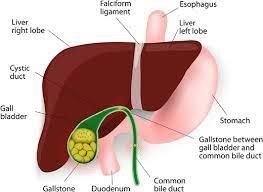A nurse is caring for a client who is 24 hr postoperative following a cesarean birth.
Select 1 condition and 1 client finding to fill in each blank in the following sentence.
The client is at risk for developing
The Correct Answer is {"dropdown-group-1":"A","dropdown-group-2":"B"}
A. Postpartum hemorrhage is incorrect because the client has scant lochia rubra and a firm fundus at the umbilicus, which indicate normal uterine involution and bleeding.
B. Seizures is correct because the client has signs of severe preeclampsia, such as headache, blurred vision, nausea, hyperreflexia, and clonus. These are indications of increased intracranial pressure and cerebral edema, which can lead to seizures or eclampsia.
C. Hyperglycemia is incorrect because there is no evidence of diabetes mellitus or gestational diabetes in the client's history or findings.
D. Hypoxemia is incorrect because there is no evidence of respiratory distress or impaired gas exchange in the client's history or findings.
E. Infection is incorrect because the client has no signs of infection, such as fever, malaise, foul-smelling lochia, or elevated WBC count.
Nursing Test Bank
Naxlex Comprehensive Predictor Exams
Related Questions
Correct Answer is A
Explanation
A. Radial vein of the inner arm. This is correct because this site is easily accessible, has good blood flow, and has less risk of complications such as infection, thrombosis, or infiltration.
B. Great saphenous vein of the leg. This is incorrect because this site is not recommended for older adults due to poor circulation, increased risk of thrombophlebitis, and difficulty in monitoring.
C. Dorsal plexus vein of the foot. This is incorrect because this site is prone to edema, infection, and injury, and can interfere with mobility and comfort.
D. Basilic vein of the hand. This is incorrect because this site is more painful, has smaller veins, and can cause nerve damage or occlusion if not inserted carefully.
Correct Answer is A
Explanation
Choice A reason:
Acetaminophen is a safer choice for pain relief in clients with cholelithiasis because it does not have significant effects on the gallbladder or biliary system. It can provide effective pain relief without exacerbating the underlying condition.
Choice B reason:
Omeprazole Omeprazole should not administer because it is a proton pump inhibitor (PPI) used to reduce stomach acid production and treat conditions such as gastroesophageal reflux disease (GERD) and peptic ulcers. It is not indicated for the treatment of pain and discomfort associated with cholelithiasis.
Choice C reason
Should not be administered
Metoclopramide Metoclopramide should not be administered because it is a medication used to treat gastrointestinal issues such as nausea, vomiting, and gastroparesis. It is not indicated for the treatment of pain associated with cholelithiasis.
Choice D reason:
Ketorolac Ketorolac should not be administered because it is an NSAID used for moderate to severe pain. However, it should be avoided in clients with cholelithiasis due to its potential adverse effects on the gallbladder and biliary system.

Whether you are a student looking to ace your exams or a practicing nurse seeking to enhance your expertise , our nursing education contents will empower you with the confidence and competence to make a difference in the lives of patients and become a respected leader in the healthcare field.
Visit Naxlex, invest in your future and unlock endless possibilities with our unparalleled nursing education contents today
Report Wrong Answer on the Current Question
Do you disagree with the answer? If yes, what is your expected answer? Explain.
Kindly be descriptive with the issue you are facing.
